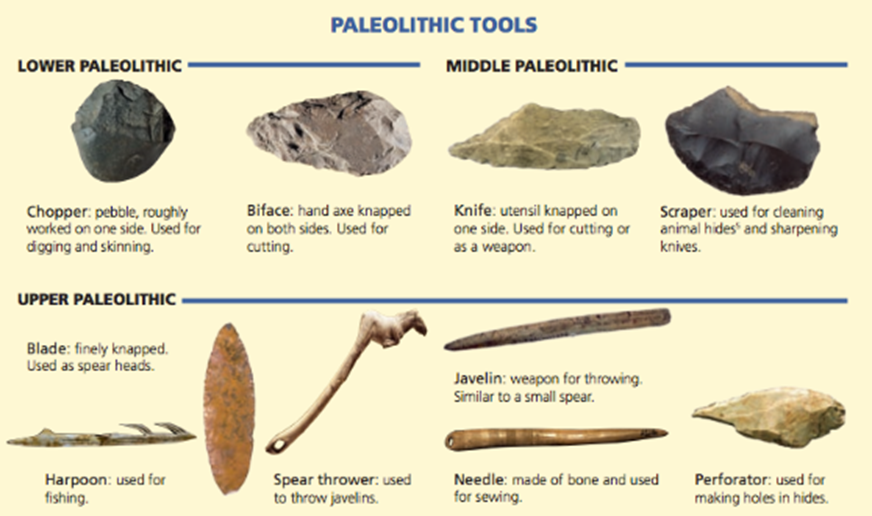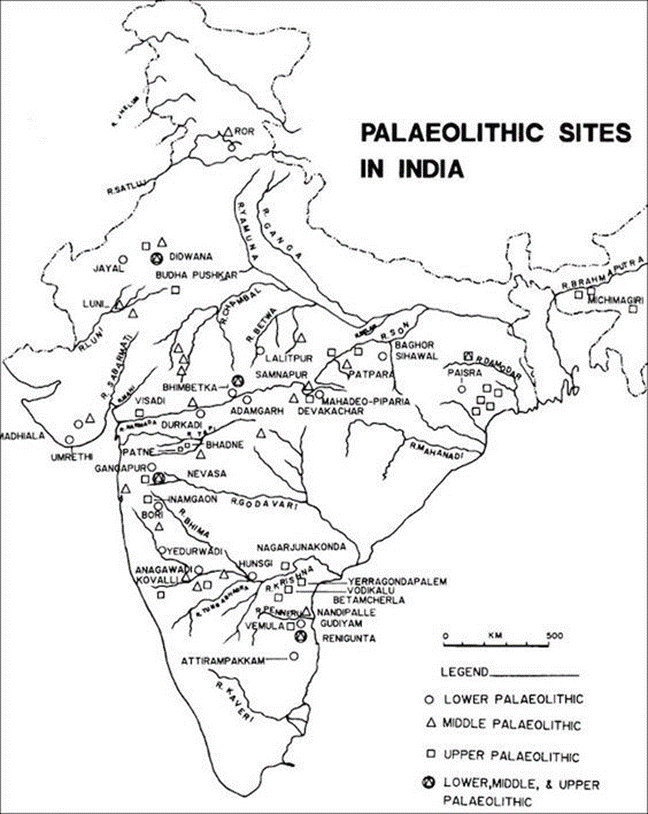Prehistoric-period / Prehistoric period / Palaeolithic Period
Introduction
- The Paleolithic Period was an ancient cultural stage of human technological development.
- It was characterized by the creation and use of rudimentary chipped stone tools.
- The period also saw the manufacture of small sculptures and paintings on cave walls.
- In India, the Palaeolithic Age is divided into three phases based on stone tool use and climate change.
I. Lower Paleolithic Age
- The Lower Palaeolithic or the Early Old Stone Age covers most of the ice age.
- It began in Africa around two million years ago but in India, it dates back to 600,000 years.
- The age consists of two principal tool-making traditions: Soanian and Acheulian.
- People used hand axes, cleavers, and choppers for chopping, digging, and skinning.
- Early Old Stone Age sites have been found in the valley of the river Son or Sohan in Punjab, now in Pakistan, as well as Kashmir and the Thar desert.
- Lower Palaeolithic tools have also been found in the Belan valley in UP and the desert area of Didwana in Rajasthan.
- Nagarjunakonda in Andhra Pradesh is an important site, and the caves and rock shelters of Bhimbetka near Bhopal show features of the Lower Palaeolithic age.
- The people of this age were food gatherers and small game hunters who lived on fish and birds.

II. Middle Paleolithic Age
- The Middle Palaeolithic industries were largely based on flakes or small pieces of stone.
- These flakes were produced by specialized techniques and the culture is referred to as the flake tool industry.
- Artefacts of this age are found at several places on the river Narmada and south of the Tungabhadra river.
- The Belan valley (UP) is rich in stone tools and animal fossils, relating to both the Lower and Middle Stone ages.
III. Upper Paleolithic Age
- The Upper Palaeolithic marks the appearance of new flint industries and modern humans.
- It is marked by technological advances in stone tool manufacture, including the production of parallel-sided blades.
- In India, blades and burins have been found in several areas, including AP, Karnataka, Maharashtra, central MP, southern UP, and Jharkhand.
- Caves and rock shelters for human use in this phase have been discovered at Bhimbetka.
- An Upper Palaeolithic assemblage characterized by large flakes, blades, burins, and scrapers has also been found in the upper levels of the Gujarat sand dunes.


